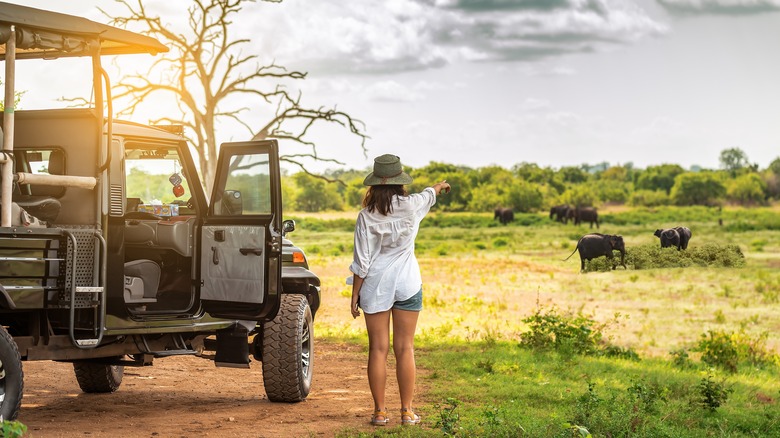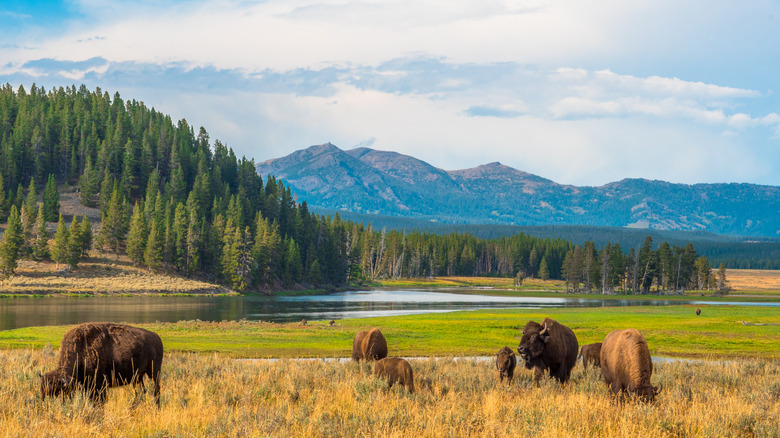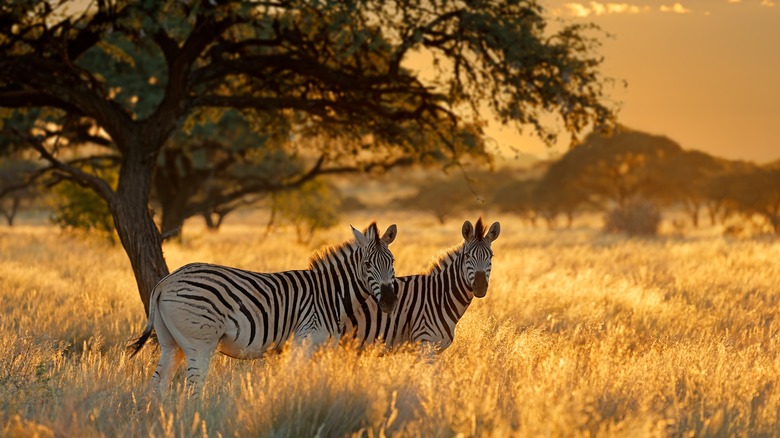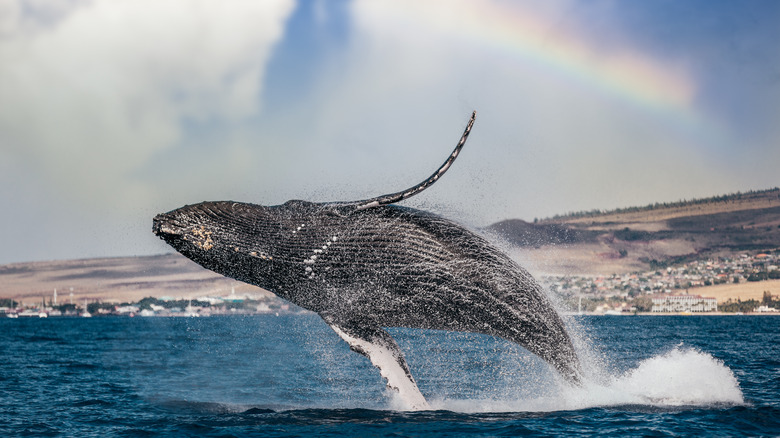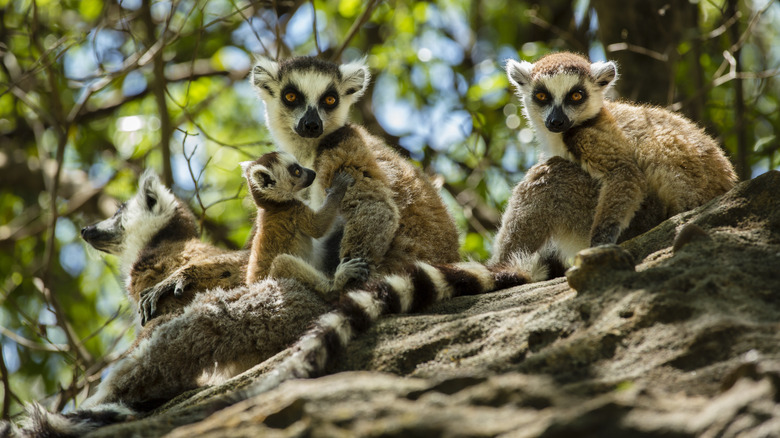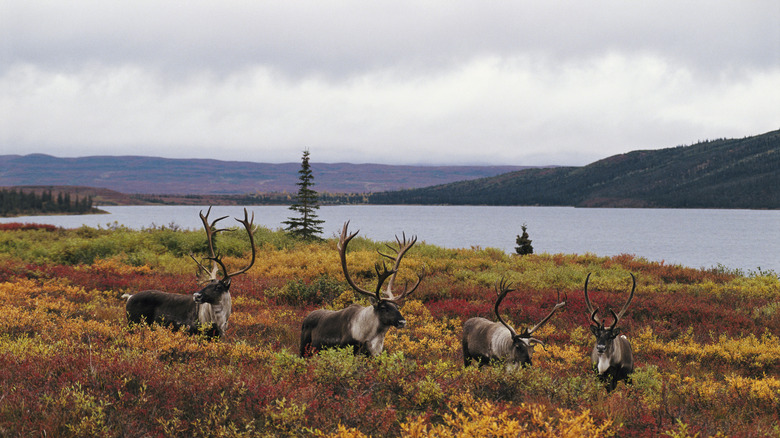Wildlife Getaways Are Trending And Here Are The Best Spots For Your Next Adventure
In 1854, the book Walden by Henry David Thoreau was published and quickly became the equivalent of a modern-day best seller. Close to two centuries later, we are once again seeing a surge in people fascinated with being closer to nature. This is reflected by the rise in popularity of outdoor activities, which is at an all-time high, as well as recent travel trends. A 2024 poll conducted by the Scott Dunn travel service showed that over 90% of Americans dream of a wildlife adventure vacation.
For both experienced outdoor adventurers as well as those who wish to take their first wildlife excursion, much of this uptick has been attributed to biophilia — the human desire to connect with nature, said to be innate in all people. As life in the modern world becomes more removed from natural elements, this desire becomes stronger. While biophilia is said to contribute to our general mental and physical health, at least as of late, it has also directed global travel trends. There are countless places people can connect with nature. However, according to feedback Scott Dunn has received from travelers and surveys, there are five locations most Americans view as the best spots for a wildlife getaway. Somewhat surprisingly, three of those locations are within the United States, including a destination that is on almost everyone's national park bucket list, along with the two last states to join the Union.
Yellowstone National Park has attracted visitors since its inception
Created as the first national park in 1872, Yellowstone has held a place in America's collective consciousness ever since. The outdoor adventures which await within the park's boundaries are almost limitless. There are hidden hiking trails in Yellowstone National Park. It is also considered the best national park for freshwater fishing. Visitors can also ski, camp, and explore the thermal basins to see hot springs and geysers. However, it is the vast array of wildlife that attracts the majority of visitors to Yellowstone each year.
While it is home to some truly majestic animals, there are also a number of creatures to beware of when adventuring in Yellowstone National Park. Elk, moose, both grizzly and black bears, and wolves can all be seen here. It also supports a large herd of bison, which, believe it or not, are actually among the most dangerous animals you can encounter. There are also a bevy of more benign critters you might run into, such as deer, pronghorn, and any number of the nearly 300 bird species located within Yellowstone. Whenever adventuring in Yellowstone, you should always be aware of your surroundings and stay a safe distance from any animal you encounter.
Safari in South Africa
Many credit American president Theodore "Teddy" Roosevelt's 1908 African safari with making safari a bucket list item for travelers from around the globe. One of those he inspired to make the trek was famous American author Ernest Hemingway, who took his first safari, a three-month adventure, in 1933. In turn, Hemingway's adventures and writings inspired even more adventurers. Through the decades, Americans' fascination with African safaris has continued to snowball to the point that visitors from the U.S. make up the largest contingent of international travelers going on safari.
For some, simply seeing the savannah is enough. However, for the vast majority, when they begin to look for the best African safari locations, they give strong consideration to the unusual animals seen on safari. The main animal attractions for those going on safari are commonly known as the Big 5 — elephant, lion, rhino, leopard, and African buffalo. To that end, South Africa's Kruger National Park is considered the premier destination to have an opportunity to view each of these five creatures up close.
Hawaii has a unique ecosystem
Hawaii has an ecosystem unlike anywhere else in the world. NatureServe considers it one of the most biodiverse areas in the United States, as well as the world. This uniqueness has everything to do with Hawaii's location and geographical makeup. The archipelago is literally in the middle of the Pacific Ocean. It grew upwards from the ocean floor through a series of volcanic eruptions and has never been connected to any major land mass, such as Asia or North America. The islands also feature seven ecological zones — seacoast, lowland forest, mid-elevation forest, rain forest, upland forest, subalpine, and alpine. As a result, the flora and fauna which emerged and evolved here are quite unique. There are several plants and animals that are found only on the Hawaiian Islands. Some are even localized to a single island in the chain.
Beyond the array of native plants and animals found in Hawaii, some species have been introduced and thrived. While Hawaii has very strict regulations to protect against invasive species today, in centuries past, critters such as the Indian mongoose and coqui frog were either intentionally or accidentally brought here and survive in large populations today. Hawaii is also on the migratory route for a variety of sea creatures and is considered one of the best locations for whale watching in the United States. The islands are also home to some endangered species such as the Hawaiian monk seal, as well as some creatures you should beware of when swimming in Hawaiian waters, such as tiger sharks.
Madagascar has an incredible array of animals
The animated movie "Madagascar" featured a cast of outlandish animals. While movie-goers may have dismissed this menagerie as pure fantasy, in reality, the movie barely scratched the surface of the incredible array of animals living on this island which sits about 250 miles off the southeast coast of Africa. It is estimated over 200,000 species of animals call this island home and 90% of those are not found anywhere else in the world. Incredibly, this number continues to grow as hundreds of new species have been discovered there since the turn of the century.
Among the more popular animals found on Madagascar include, not surprisingly, a number of those depicted in the movie. Lemurs and panther chameleons are two of the most iconic. Mouse lemurs, aye-ayes, sifakas, and indris are other popular creatures, along with the myriad of bird species. Beyond the incredible array of wildlife found on the island itself, the waters just offshore see a tremendous number of migrating humpback whales during the summer months.
Alaska is considered America's Last Frontier
Alaska wasn't the final state to join the United States. It slipped in just before Hawaii in 1959 to officially become the 49th state in the Union (although it had been a U.S. territory since 1867). Once known as Seward's Folly, a slight at the former secretary of state for supposedly purchasing a frigid wasteland, today, Alaska is roundly known as America's Last Frontier. While it was originally gold and, later, oil that caused the general public to see the value of Alaska, today it is the landscape and diverse wildlife that draws people from around the world.
Alaska is as rugged as it is scenic and can be as treacherous as it is beautiful. It is home to one of America's most dangerous national parks. It is the only state in the U.S. to have a population of each type of dangerous bear in North America — black, brown (grizzly), and polar. A number of other potential dangerous animals such as elk, moose, muskoxen, and wolves are also found in Alaska. Viewing such creatures can be exhilarating, but must be done with caution. However, Alaska is not just about potentially deadly animals. It has the largest population of bald eagles in the United States and is considered a top whale watching destination and the best place to view the Northern Lights in the U.S.
